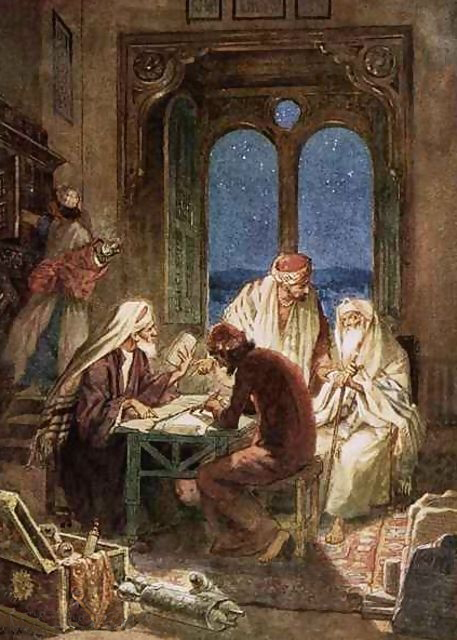
The Masoretes were a group of Hebrew scholars who worked for 400 years to collect all the versions of the Old Testament and refine them into an authoritative text.
Meaning “preservers of tradition,” they consisted of two families, Ben Asher and Ben Naphtali, who worked in the city of Tiberias on the western shore of the Sea of Galilee from the Fifth Century through the 10th Century.
Rabbi Jordan Parr, of Temple Beth El, and Dan Johnson, head elder of the Emet HaTorah Church, say the Masoretes should be better known because their accomplishment was paramount.
“Various versions of the Bible were circulating throughout the Jewish world and they vocalized it, or put vowels where there had only been dots and dashes, and added chapters and verses,” Rabbi Parr said.
“Scribal errors had creeped into the hand-written copies like typos. When a scribe looked at a scroll and copied onto a new one, it was easy for his hand to slip and make an honest mistake that went unnoticed and then was recopied. Their work became the standard Bible around the world.”
Parr said the work of the Ben Ashers and Ben Nephtalis was evaluated by scholars in the 14th Century and the Ben Ashers’ version was adjudged the best and was thereafter used as the definitive Old Testament. “The earliest version we have from that time is in a museum in St. Petersburg, Russia,” he said.
“Ben” means “son of.”
Johannes Gutenberg of Mainz, Germany, made the first printed Bible in 1454.
“Most people don’t realize what occurred,” Parr said. “Looking at these texts and the Dead Sea Scrolls that were discovered in 1946-47, you can see passages that changed over time, so it’s possible that Jesus was reading something a little different than what we read today.”
A 10th Century scribe who particularly stood out, scholars say, was Aaron ben Moses ben Asher, whose version “certainly fulfilled a need,” Parr said.
“It was critical to the development of Judaism.”
Scholars today say Ben Moses ben Asher “was the first systematic Hebrew grammarian.”
Johnson said the Septuagint, a Greek version of the Old Testament made for Greek-speaking Jews in Egypt in the Second and Third centuries B.C., “is a little bigger than the Masoretic text and closer to the original Hebrew.
“You’ve got to study both of them in correlation with Hebrew itself because they definitely have value,” he said. “You get a far better understanding of the culture, which you need or you’ll miss what is really being portrayed. One important thing about the Masoretic text is that they put in the vowel points.”
Johnson said the discovery of the Dead Sea Scrolls in the Qumran Caves in the Judean Desert was also a key development in the compilation of the authoritative Old Testament. Written on papyrus, parchment and copper, most of the Dead Sea Scrolls are in Hebrew, although some are in Aramaic. They date from 408 to 318 B.C.
“Most of the vowel pointing today comes from the Masoretic text,” Johnson said. “The Septuagint is a better version, but we look at both of them. To get a deep spiritual understanding of what’s being said, you need to know that there are four layers of meaning.”
He referred to the Hebrew terms “peshat” for the surface or literal meaning, “remez” for hints of the hidden or symbolic meaning, “derash” for the comparative meaning and “sod” (pronounced soad) for the esoteric or mystical meaning that is given through inspiration or revelation.



